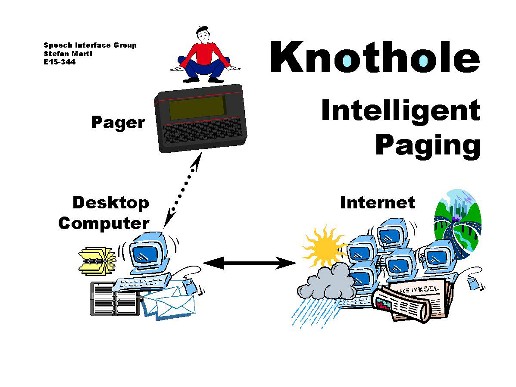
| Our paging system uses two-way pagers to provide a bi-directional link to subscriber's normal email, with additional access to personal information on the subscriber's computer and external information via the Web and other sources. It is a combination of public domain programs, PERL scripts, various other "glue" scripts, some C programs, and a number of local Media Lab PIMs. A generic extension mechanism is included. It is targeted for Unix. Some parts could be easily ported to other locales, other parts would have to be re-written to follow local conventions. |